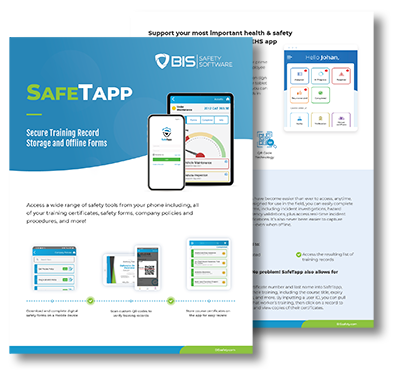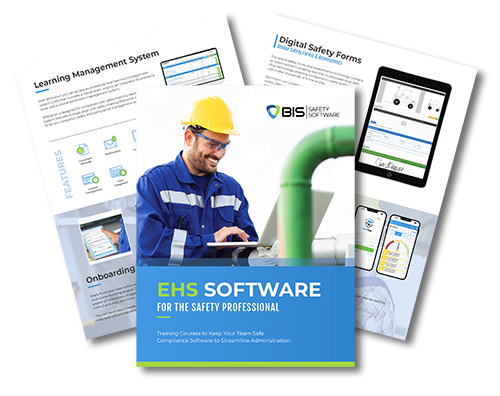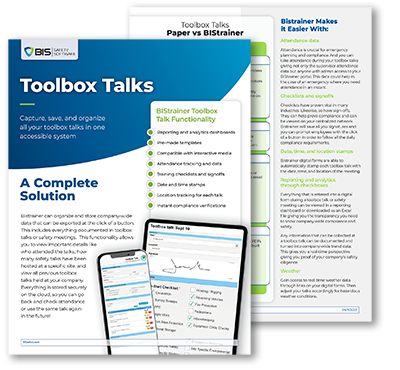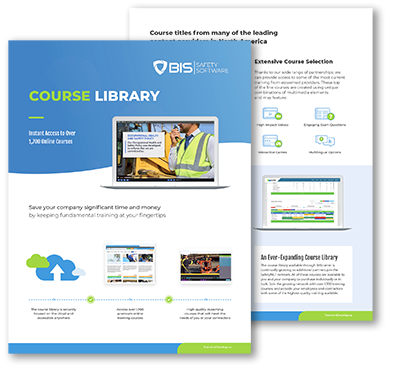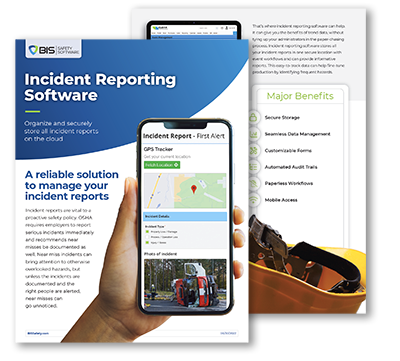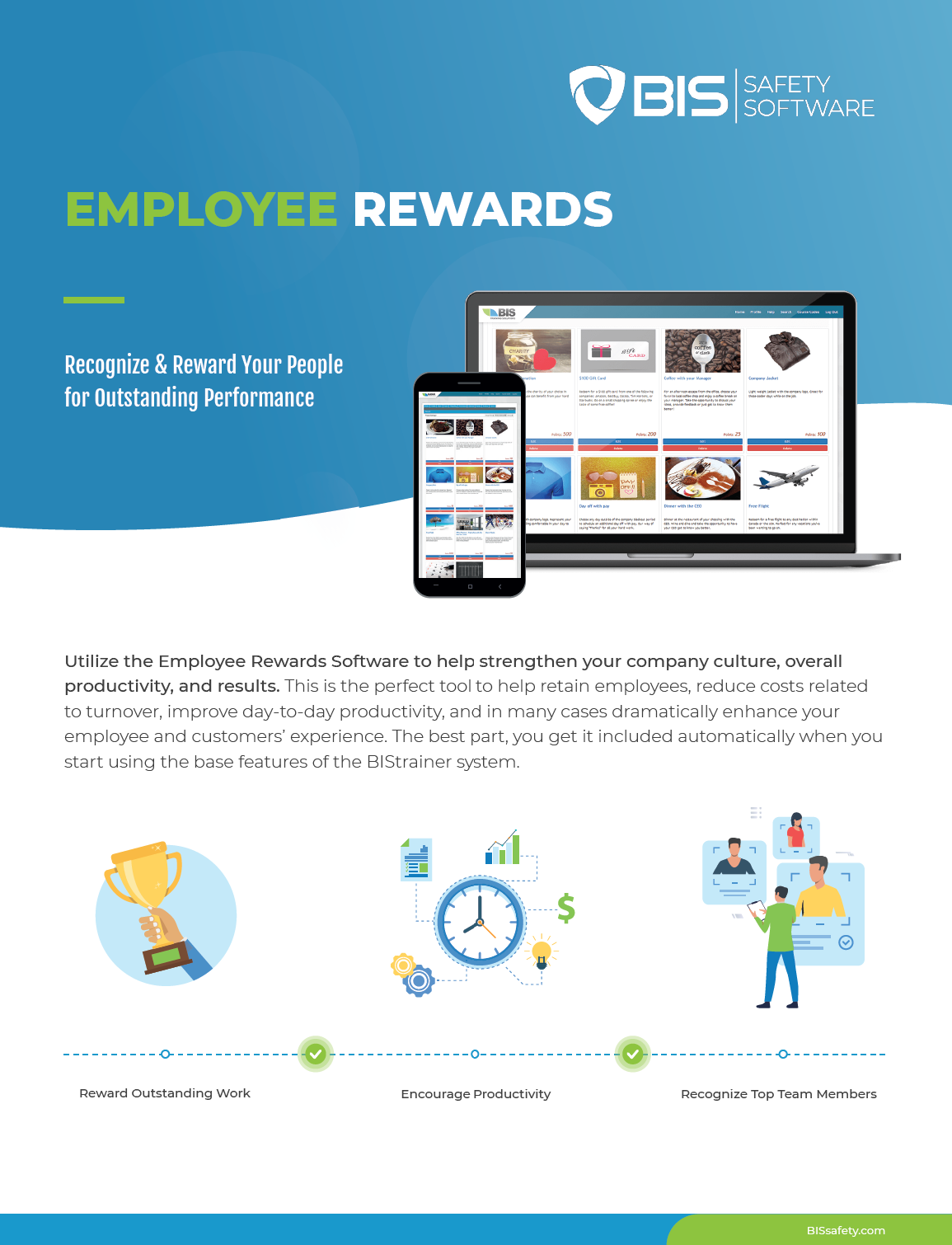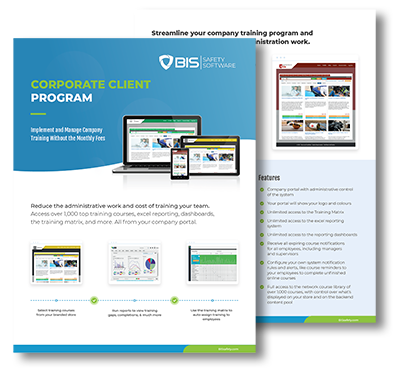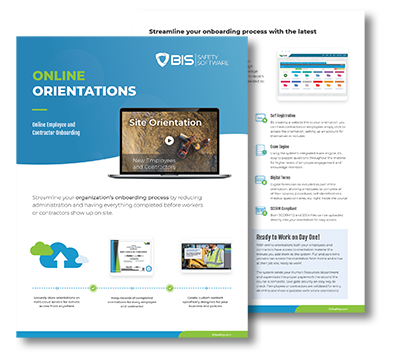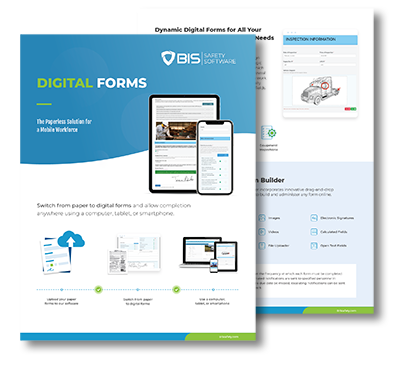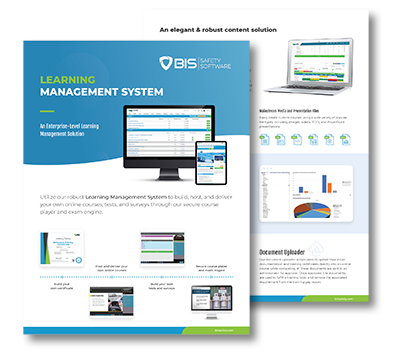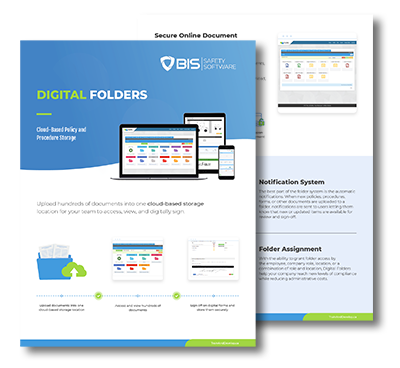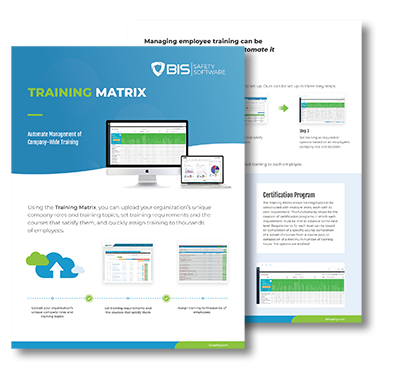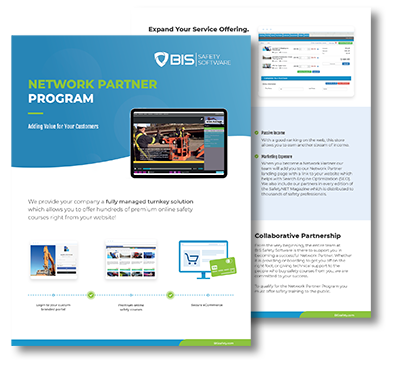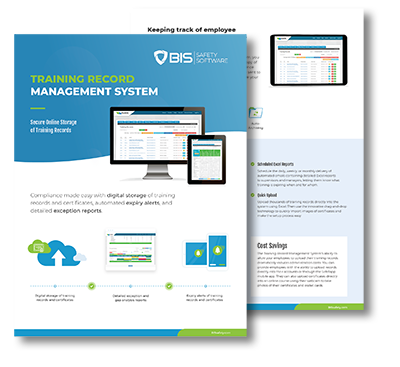
Comprehensive EHS Compliance Software Guide for Modern Businesses
Environmental, Health, and Safety (EHS) compliance is crucial for modern businesses, but managing it effectively can be challenging. This guide explores how EHS compliance software can streamline your processes, reduce risks, and ensure regulatory adherence. We’ll cover key features to look for, benefits of implementation, and best practices for choosing the right solution. By the end, you’ll understand how EHS compliance software can transform your safety management, improve energy efficiency, and enhance process safety management through advanced technology and robust compliance management tools.
Explore this Article
- Understanding EHS Compliance Needs in Modern Businesses
- Key Features of Effective EHS Compliance Software
- Benefits of Implementing EHS Compliance Software
- Choosing the Right EHS Compliance Software for Your Business
- Best Practices for Implementing EHS Compliance Software
- Case Studies: Successful EHS Compliance Software Implementations
- Conclusion
Understanding EHS Compliance Needs in Modern Businesses
Modern businesses face complex EHS compliance challenges in today’s regulatory landscape. This section explores the importance of workplace safety, navigating regulations, consequences of non-compliance, and identifying specific requirements. EHS software emerges as a crucial tool for leadership to conduct audits, prevent injuries, and ensure comprehensive compliance across operations.
The Importance of Environmental Health and Safety in Today’s Workplace
Environmental Health and Safety (EHS) plays a crucial role in modern workplaces, focusing on protecting human health, ensuring employee well-being, and promoting sustainable practices. EHS management software has become essential for businesses to maintain transparency, streamline compliance processes, and facilitate sustainability reporting. This comprehensive approach enables organizations to effectively manage risks, reduce incidents, and foster a culture of safety while meeting regulatory requirements and stakeholder expectations.
Navigating the Regulatory Landscape and Compliance Challenges
Modern businesses face complex regulatory landscapes that require careful navigation to ensure Environmental Health and Safety (EHS) compliance. Organizations must stay abreast of evolving regulations set by agencies like the Occupational Safety and Health Administration, which mandate the use of personal protective equipment and implementation of safety protocols. EHS management software plays a crucial role in helping companies track compliance requirements, conduct root cause analysis of incidents, and manage employee training programs efficiently. This comprehensive approach enables businesses to maintain compliance while fostering a culture of safety and continuous improvement.
Consequences of Non-Compliance for Businesses
Non-compliance with EHS regulations can result in severe consequences for businesses, including financial penalties, legal liabilities, and reputational damage. Poor data quality and inefficient incident management systems often contribute to compliance failures, highlighting the need for robust EHS software solutions. These tools enhance visibility into safety processes, streamline data collection, and improve overall efficiency in managing EHS compliance requirements, thereby mitigating risks associated with non-compliance.
Identifying and Assessing Specific Compliance Requirements
Identifying and assessing specific compliance requirements demands a comprehensive approach to environmental health and safety. Organizations must leverage advanced EHS software that integrates process safety information and utilizes APIs to streamline data collection from various sources, including smartphones. This technology-driven strategy enables businesses to efficiently track regulatory changes, conduct thorough risk assessments, and ensure compliance across all operational aspects.
Businesses grapple with EHS compliance daily. Effective software can transform this challenge into an opportunity for growth and safety.
Key Features of Effective EHS Compliance Software
Effective EHS compliance software integrates comprehensive management capabilities, user-friendly interfaces, and real-time monitoring to enhance accessibility and reduce operational risk. Key features include automated reporting, seamless integration with existing systems, and customization options. These elements work together to create a robust EHS software solution that supports environmental compliance across the value chain.
Comprehensive Compliance Management Capabilities
Effective EHS compliance software integrates comprehensive management capabilities to streamline workflows and enhance sustainability initiatives across the supply chain. These systems offer robust inspection tools, enabling organizations to conduct thorough audits and assessments of their environmental, health, and safety practices. By centralizing data and automating compliance processes, the software empowers businesses to proactively manage risks, maintain regulatory compliance, and drive continuous improvement in their EHS performance.
User-Friendly Interface and Ease of Use
Effective safety management software incorporates user-friendly interfaces that streamline regulatory compliance processes. These intuitive systems leverage business intelligence to present complex data in easily digestible formats, fostering innovation and knowledge sharing across organizations. By prioritizing ease of use, EHS compliance software enables safety managers to efficiently navigate through various modules, conduct inspections, and generate reports without extensive training, ultimately enhancing overall safety performance.
Real-Time Monitoring and Automated Reporting
Effective EHS compliance software incorporates real-time monitoring and automated reporting features to enhance risk assessment and quality management processes. These systems continuously track safety data sheets, assets, and key performance indicators, providing instant alerts for potential hazards or compliance issues. By automating report generation and distribution, the software streamlines governance procedures, enabling safety managers to focus on proactive measures rather than manual data compilation.
Integration With Existing Business Systems
Effective EHS compliance software seamlessly integrates with existing business systems, enabling organizations to manage dangerous goods and assess risks efficiently. This integration allows for streamlined data flow between departments, enhancing overall compliance efforts and reducing the likelihood of errors. By incorporating pricing considerations and aligning with current processes, companies can optimize their EHS management while minimizing disruption to established workflows.
Customization to Fit Unique Business Needs
EHS software solutions offer customization options to address unique business needs, enhancing operational risk management and job safety analysis processes. These tailored systems allow organizations to automate specific workflows, integrate company-specific safety protocols, and generate custom reports. By adapting to individual industry requirements and organizational structures, customized EHS software provides deeper insight into safety performance and compliance status, enabling more effective decision-making and risk mitigation strategies.
The features make the software powerful. But its real value lies in what it can do for your company.
Benefits of Implementing EHS Compliance Software

Implementing EHS compliance software offers significant benefits for modern businesses. This section explores how these solutions streamline processes, enhance workplace safety, reduce risks, improve data management, and achieve operational efficiency. Through mobile apps and advanced analytics, companies can set and track safety goals effectively. A comprehensive approach to EHS management, as outlined in industry white papers, leads to improved compliance and cost savings.
Streamlining Compliance Processes and Workflows
EHS compliance software streamlines processes and workflows by integrating product stewardship and risk management into a unified system. This comprehensive approach enables organizations to efficiently collect, analyze, and manage data across various compliance areas. By automating routine tasks and providing a centralized platform for learning and collaboration, the software enhances overall efficiency and reduces the likelihood of errors in compliance management.
Enhancing Workplace Safety and Employee Well-Being
EHS compliance software significantly enhances workplace safety and employee well-being by providing comprehensive dashboards that track safety metrics and promote a robust safety culture. These systems enable efficient management of hazardous waste protocols and empower the workforce to actively participate in safety initiatives. By centralizing safety data and facilitating real-time reporting, organizations can quickly identify and address potential risks, fostering a proactive approach to workplace safety that ultimately improves employee health and productivity.
Reducing Risks and Preventing Incidents
EHS compliance software significantly reduces risks and prevents incidents in manufacturing environments by leveraging comprehensive databases and learning management systems. These tools enable organizations to identify potential hazards, track near-misses, and implement preventive measures across the workplace. By integrating product safety information and providing real-time alerts, the software empowers employees to make informed decisions, ultimately reducing accidents and promoting a safer work environment.
Improving Data Management and Accessibility
EHS compliance software enhances data management and accessibility by centralizing occupational safety and health information, fostering a robust safety culture. These systems enable efficient tracking of corporate sustainability metrics, hygiene practices, and safety performance indicators, facilitating benchmarking against industry standards. By providing real-time access to critical data, organizations can make informed decisions, identify trends, and implement proactive measures to improve overall EHS performance.
Achieving Operational Efficiency and Cost Savings
Implementing EHS compliance software drives operational efficiency and cost savings by streamlining certification processes and enhancing health and safety protocols. Organizations can leverage artificial intelligence to automate routine tasks, such as generating checklists and conducting audits, reducing manual effort and minimizing errors. The improved usability of these systems enables faster onboarding and more effective utilization of resources, ultimately leading to reduced operational costs and increased productivity across the organization.
Implementing EHS compliance software offers clear benefits. Now, let’s explore how to select the right solution for your organization.
Choosing the Right EHS Compliance Software for Your Business
Selecting the right EHS compliance software requires careful evaluation of business needs, vendor capabilities, and software features. This section guides organizations through assessing compliance objectives, evaluating solutions, considering scalability, reviewing support options, and analyzing costs. By focusing on these key areas, businesses can choose software that enhances hazard management, enables efficient waste handling, and provides valuable intelligence for improved adherence to regulations.
Assessing Business Needs and Compliance Objectives
Assessing business needs and compliance objectives forms the foundation for selecting appropriate EHS compliance software. Organizations must evaluate their specific requirements in areas such as learning management, waste management, and water usage to ensure the chosen solution addresses their unique environmental compliance challenges. The software’s interface should align with the company’s existing workflows and user preferences, facilitating seamless integration and adoption across departments. By thoroughly analyzing these factors, businesses can identify environmental compliance software that not only meets current regulatory demands but also supports long-term sustainability goals and operational efficiency.
Evaluating Software Solutions and Vendors
Evaluating EHS compliance software solutions and vendors requires a comprehensive assessment of their capabilities in accounting, hazard analysis, and enterprise risk management. Organizations should scrutinize each vendor’s track record, examining case studies and client testimonials to gauge the software’s effectiveness in real-world scenarios. It is crucial to evaluate the solution’s ability to integrate with existing systems, its scalability to accommodate future growth, and its capacity to address industry-specific compliance requirements.
Considering Scalability and Future Business Growth
When selecting EHS compliance software, organizations must consider scalability to accommodate future business growth. The chosen solution should offer flexible licensing options, allowing for easy expansion of user access and additional modules as the company’s needs evolve. Scalable software ensures that businesses can adapt to changing regulatory requirements, incorporate new technologies, and extend compliance management across multiple sites or departments without significant disruption or costly system overhauls.
Reviewing Support, Training, and Customer Service Options
When selecting EHS compliance software, organizations must thoroughly review the support, training, and customer service options provided by vendors. Comprehensive training programs ensure smooth implementation and user adoption, while robust support services address technical issues promptly. Evaluating the availability of ongoing customer service, including dedicated account managers and online resources, helps businesses maximize the software’s value and maintain compliance effectively.

Best Practices for Implementing EHS Compliance Software
Implementing EHS compliance software requires strategic planning and execution. This section explores key practices for successful deployment, including integration strategies, employee training, data security, monitoring systems, and continuous improvement. By following these guidelines, organizations can maximize the benefits of their EHS software investment and ensure long-term compliance success.
Planning Deployment and Integration Strategies
Successful deployment and integration of EHS compliance software requires careful planning and coordination across departments. Organizations should establish a cross-functional team to oversee the implementation process, ensuring alignment with existing systems and workflows. This team should develop a phased rollout strategy, prioritizing critical modules and gradually expanding functionality to minimize disruption and maximize user adoption.
Training Employees and Encouraging User Adoption
Effective training programs are crucial for successful EHS compliance software implementation. Organizations should develop comprehensive training modules tailored to different user roles, focusing on practical application of the software’s features. By incorporating hands-on exercises and real-world scenarios, employees can quickly gain proficiency in using the system. To encourage user adoption, companies should highlight the software’s benefits in streamlining workflows and improving safety outcomes, fostering a sense of ownership and commitment among staff.
Ensuring Data Security and Privacy Compliance
Ensuring data security and privacy compliance is crucial when implementing EHS compliance software. Organizations must establish robust security protocols, including encryption, access controls, and regular audits, to protect sensitive information. Compliance with data protection regulations, such as GDPR or CCPA, should be prioritized throughout the implementation process. By implementing these measures, companies can safeguard their data integrity and maintain stakeholder trust.
Setting Up Effective Monitoring and Reporting Systems
Setting up effective monitoring and reporting systems is crucial for maximizing the benefits of EHS compliance software. Organizations should establish key performance indicators (KPIs) that align with their compliance objectives and configure the software to track these metrics automatically. Regular reviews of dashboards and reports enable safety managers to identify trends, address potential issues proactively, and demonstrate compliance to regulatory bodies. By leveraging real-time data and analytics, companies can make informed decisions and continuously improve their EHS performance.
Maintaining and Updating the Software for Continuous Improvement
Regular maintenance and updates are essential for ensuring the continued effectiveness of EHS compliance software. Organizations should establish a systematic approach to software updates, including scheduled reviews of system performance, integration of new regulatory requirements, and implementation of user feedback. By consistently refining and expanding the software’s capabilities, companies can adapt to evolving compliance standards, improve user experience, and maximize the return on their investment in EHS management tools.
The proof is in the pudding. Let’s look at real-world examples of successful EHS compliance software implementations.
Case Studies: Successful EHS Compliance Software Implementations
This section examines successful EHS compliance software implementations across various industries. Case studies highlight how a manufacturing company enhanced safety measures, a construction firm reduced incidents, and an energy sector business achieved environmental goals. A small business case demonstrates streamlined operations with custom solutions. The section concludes by exploring emerging trends in EHS compliance software.
Manufacturing Company Enhances Compliance and Safety Measures
A leading automotive parts manufacturer implemented EHS compliance software to address safety concerns and regulatory challenges. The company integrated the software across its production facilities, automating incident reporting and risk assessments. This implementation resulted in a 30% reduction in workplace accidents within the first year and streamlined compliance processes, saving hundreds of man-hours previously spent on manual data entry and report generation.
Construction Firm Reduces Incidents With Proactive Management
A major construction firm implemented EHS compliance software to address high incident rates and regulatory challenges. The company integrated mobile apps for real-time hazard reporting and automated safety inspections across its project sites. This proactive approach resulted in a 45% reduction in workplace accidents within 18 months and improved compliance with OSHA regulations. The software’s analytics capabilities enabled the firm to identify recurring safety issues and implement targeted prevention strategies, leading to a safer work environment and reduced insurance premiums.
Energy Sector Business Achieves Environmental Compliance Goals
A major energy corporation implemented EHS compliance software to address environmental challenges and regulatory pressures. The company integrated the software across its operations, automating emissions monitoring, waste management, and reporting processes. This implementation resulted in a 25% reduction in emissions violations within the first year and streamlined environmental compliance reporting, saving significant time and resources. The software’s advanced analytics capabilities enabled the firm to identify areas for improvement in resource efficiency, leading to a 15% reduction in energy consumption and associated costs.
Small Business Streamlines Operations With Custom Solutions
A small manufacturing company implemented a customized EHS compliance software solution to address its unique operational challenges. The tailored system integrated seamlessly with existing processes, automating safety inspections and incident reporting across the facility. This implementation resulted in a 40% reduction in compliance-related paperwork and a 20% increase in overall operational efficiency within six months. The company’s investment in a custom solution proved cost-effective, demonstrating that EHS software can be scaled and adapted to meet the specific needs of smaller businesses.
Emerging Trends and the Future of EHS Compliance Software
Emerging trends in EHS compliance software include the integration of artificial intelligence for predictive risk analysis and the use of blockchain technology for secure data management. These advancements enable organizations to anticipate potential safety issues and ensure the integrity of compliance records. The future of EHS software will likely see increased adoption of virtual reality for immersive safety training and the implementation of Internet of Things (IoT) devices for real-time environmental monitoring, further enhancing the effectiveness of EHS management systems.
Conclusion
Comprehensive EHS compliance software is essential for modern businesses to navigate complex regulatory landscapes, enhance workplace safety, and streamline compliance processes. By implementing these solutions, organizations can reduce risks, prevent incidents, and achieve operational efficiency while ensuring data security and privacy compliance. Effective EHS software integrates seamlessly with existing systems, offers customization options, and provides real-time monitoring and automated reporting capabilities. As demonstrated by successful case studies across various industries, investing in the right EHS compliance software can lead to significant improvements in safety performance, regulatory adherence, and overall business operations.







